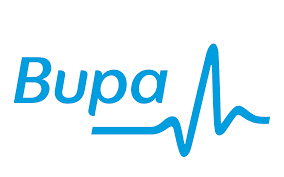written by Laura Wilden, osteopath.
What is Scoliosis?
Scoliosis is an abnormal sideways curvature of the spine. The amount scoliosis would affect a person generally depends on the severity of the condition, or the acuteness of the curve, known as the Cobb angle. Scoliosis is reasonably common in a mild form and something we can help manage at Freedom clinics. It is important to keep the spine mobile and address any muscular imbalances, especially with adolescent onset scoliosis as they tend to become more problematic with growth.
Signs of Scoliosis
Usually the only signs are back pain and physical imbalances such as shoulders being different heights, one shoulder blade being more prominent than the other, or the appearance of a raised or prominent hip. The majority of the time this would not dramatically affect your day to day life, but can be a foundation for future injuries.
Famous people with Scoliosis include; Usain Bolt, Sarah Michelle Gellar, Elizabeth Taylor, Kurt Cobain. These examples are mild but they demonstrate that with treatment Scoliosis shouldn’t affect a person’s movements at all.
The most famous person with Scoliosis is likely to be the medieval king Richard III. Archaeologists recently announced that bones excavated from underneath a parking lot in Leicester, belonged to Richard III and though he was previously portrayed by Shakespeare as a hunchback, he did in fact suffer from the spine-curving condition scoliosis.
Historic treatment verses modern day practices
Mary Ann Lund, of the University of Leicester’s School of English, researched treatment types available in the period of Richard III (much of which was only available to the wealthy). Some of the short-term scoliosis treatments available during the late medieval period would have been painful.
These would have included;
- Traction – this relied on the same principle as the so-called Rack used in torture.
- The insertion of Harrington rods, which were used to immobilise the spine and fix it in a straight position.
- Longer-term care would have evolved wearing a long piece of wood or metal to straighten the spine – not something we prescribe at Freedom Clinics!
Modern day treatments
All varieties of scoliosis have unique characteristics, therefore making it necessary to be assessed clinically by a qualified healthcare professional when seeking advice and treatment.
Modern day treatments for severe scoliosis include;
- Exercise programs and manual therapy is usually a primary form of treatment by a qualified professional.
- Maintenance treatment from a manual therapist and lifestyle advice, which can manage pain and keep you active.
- Traction is still used in manual therapy today (less the ropes), and a lot of people are seeking traction treatment in the form of inversion tables which has been designed to treat herniated discs and spinal stenosis.
- In rare and extreme cases, surgery, such as lateral inter-body fusion, which is a lot less invasive than the Harrington rods!
Posture problems in 2014
There are a high number of patients whose aches and pain derive from poor working posture, usually upper back and neck related disorders or lower back strains. It is always wise to seek advice soon after noticing your symptoms as these things usually get a lot worse if left, and then take a lot longer to get better even with treatment.
Symptoms can include;
- Neck ache
- Shooting pain
- Numbness in the arm
If you book a Free Consultation at Freedom Clinics, we can give you advice and suggest the best treatment options for you, whether it’s a regarding a modern day office strain, sporting injury or chronic mechanical issue.





